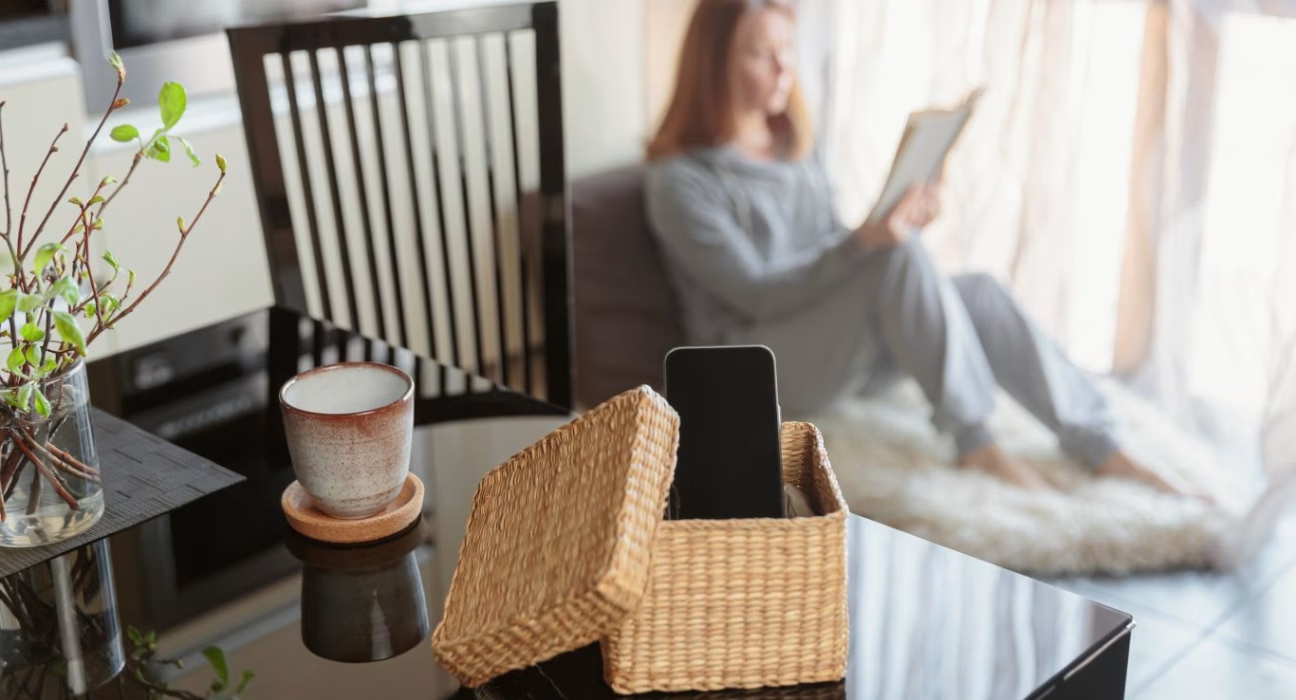A relationship detox isn’t about cutting people out of your life impulsively — it’s about clearing emotional clutter, healing patterns that exhaust you, and recognizing the subtle signs that a connection is draining instead of nourishing you.
In today’s world, where emotional burnout is becoming normalized, a relationship detox is one of the most powerful forms of self-care and emotional hygiene you can practice.
This guide will help you understand the difference between a challenging relationship and an energetic drain, identify early signs that it’s time to step back, and walk you through a practical ritual to begin detoxing your relationship life with clarity and compassion.
More: Giver-taker relationship: How to find balance in relationships
What is a relationship detox?
A relationship detox is the process of stepping back from relationships that deplete your emotional, mental, or energetic well-being. It involves evaluating your dynamics, setting boundaries, and detoxing from people-pleasing, overgiving, emotional overfunctioning, and unbalanced giver–taker patterns.
A relationship detox isn’t punishment. It’s protection.
It’s a return to balance, to reciprocity, and to connections that feel like a safe and aligned part of your life.
More: How to stop repeating the same mistake and learn from it?
Why do we need a relationship detox at certain points in life
Every one of us goes through periods where our relationships feel heavier than they should. Sometimes this happens because:
– We outgrow old patterns
– We evolve beyond certain dynamics
– We become more aware of our needs
– Our nervous system becomes more sensitive
– We realize we’ve been the giver for too long
– Or we discover we’ve been taking more than giving
A relationship detox is especially crucial if:
– You’re emotionally burnt out
– You feel drained after interactions
– You’re constantly overthinking your relationships
– You’ve been ignoring your own needs
– You’ve been stuck in giver–taker imbalances
This detox isn’t an ending — it’s a reset. More: Self-Care: Why spa visits are essential for well-being?


Challenging relationship vs. “Energy Vampire”: What’s the difference?
Not every difficult relationship is toxic. This is important because many people confuse discomfort with danger.
Some relationships stretch you.
Others shrink you.
A relationship detox requires learning to tell the difference.
Challenging relationships: The ones that help you grow
A challenging relationship may bring discomfort, but it doesn’t deplete you. These are the relationships that ask you to:
– Communicate more clearly
– Take responsibility when needed
– Understand your triggers
– Work through conflict instead of avoiding it
– Expand your emotional maturity
Challenging relationships are two-sided.
The effort is mutual.
Growth is shared.
They might not be easy — but they are not draining.
Energy-draining relationships: The ones that slowly deplete your life force
An “energy vampire” is not always dramatic or obvious. Often they appear charming, kind, or even wounded. But over time, the dynamic becomes clear: your energy flows out, and theirs flows in.
Signs of an energy-draining person:
– Constant emotional demands without reciprocity
– Selective empathy (they understand when it benefits them)
– Lack of self-awareness
– Chronic drama or chaos
– Guilt-tripping when you set boundaries
– Emotional inconsistency
– No real interest in your inner world
– You always leave interactions feeling emptier, smaller, or unsettled
These relationships don’t challenge you — they deplete you.
A relationship detox helps you recognize these patterns early and step away from them responsibly. More: 10 Authentic signs you’re going through a spiritual awakening
Early signs you need a relationship detox
Before a relationship becomes overwhelming, your body and intuition send subtle signals. A relationship detox works best when you catch these signs early.
Here are the most common early indicators:
1. Your body tightens before interactions
You feel yourself bracing. Your breath becomes shallow. Your shoulders tense without reason.
Your nervous system recognizes emotional danger before your mind rationalizes it.
2. You overfunction in the dynamic
Overexplaining. Overthinking. Overextending. Overgiving.
You show up with emotional labor.
They show up with needs.
3. You leave conversations feeling confused or drained
Healthy relationships leave you:
– clear
– grounded
– understood
Draining one’s leave you:
– dizzy
– insecure
– emptied
4. Everything is one-sided
You initiate. You support. You accommodate. You apologize. They consume what you give but rarely offer the same.
5. Your needs are minimised or invisible
You walk on eggshells. You censor yourself. You shrink to keep the peace. Your needs feel like burdens, not natural parts of connection.
6. You’re constantly trying to “fix” the relationship
You believe: “If I try harder, it will get better.”, “If I give more, they’ll finally understand.” This is the classic giver–taker trap.
A relationship detox helps you break free. More: Parentification and dysfunctional relationships
The emotional patterns behind draining relationships
Many people who need a relationship detox are naturally:
– givers
– empaths
– fixers
– people-pleasers
– emotionally intuitive individuals
And they often attract people who are naturally:
– takers
– receivers
– avoidantly attached
– emotionally unavailable
– validation-seeking
Why does this happen?
Because your patterns fit together like puzzle pieces —
but not in a healthy way.
A relationship detox helps you break the cycle and reset your emotional boundaries. More: Put yourself first: Why is self-priority not selfish?
The relationship detox ritual: A step-by-step guide to resetting your energy
This ritual is designed to help you emotionally untangle from draining dynamics and open space for healthier, more balanced relationships.
Step 1: Reconnect with your energy baseline
Sit quietly for 1–2 minutes. Notice your body, breath, and emotional state. This is your natural baseline.
Now bring the person to mind. Does your energy shift? If the answer is consistently yes, that’s your first sign.
Step 2: Name the dynamic honestly
This could be written or spoken out loud:
– “This relationship drains me.”
– “I give more than I receive.”
– “My boundaries collapse around this person.”
– “My intuition tightens around their energy.”
Naming is powerful. It breaks unconscious patterns.
Step 3: Create a boundary shift (without conflict)
A relationship detox does not require confrontation. Often, it’s more about access than arguments.
Here are low-conflict ways to detox:
– delay replies instead of rushing
– reduce emotional labor
– stop offering solutions
– say “not today” or “I can’t right now”
– invest more in balanced relationships
– reduce exposure to draining behavior
You don’t have to justify your boundaries. You simply change the pattern.
Step 4: Detox the emotional residue from your body
Emotions aren’t just thoughts — they’re stored physically.
Choose one of these detox methods:
– long walk without your phone
– grounding breathwork
– shaking out your body
– journaling the feelings you’ve held inside
– imagery of washing their energy off your skin/aura
– a warm shower with intentional release
– somatic exhale (long exhale to release tension)
Your body knows how to let go — you just have to give it permission.
Step 5: Set a new internal standard for your relationships
A detox isn’t just about who you step back from — it’s about who you step toward.
Declare internally:
– “I am available for reciprocal relationships.”
– “I welcome emotional maturity and clarity.”
– “I choose people who nourish my nervous system.”
This declaration resets your entire emotional ecosystem.
After the relationship detox: What healthy connections feel like
Healthy relationships feel like:
– calm, even during conflict
– mutual curiosity
– reciprocal effort
– soft nervous system energy
– shared responsibility
– space for repair
– emotional transparency
– respect for boundaries
Healthy relationships don’t drain you — they regulate you.
FAQ: Relationship detox
1. Does a relationship detox mean I have to cut people off?
Not necessarily. A relationship detox is more about creating space, reassessing dynamics, and reclaiming your energy — not burning bridges.
2. How do I detox without hurting someone?
Gentle distancing, slower responses, reduced emotional labor, clearer boundaries, and focusing on self-care are non-confrontational ways to detox.
3. What if the draining person is a family member or partner?
Then the detox involves boundary restructuring, not disappearance. You might need stronger emotional boundaries, therapy support, or new communication patterns.
4. How do I know if I am the taker in a relationship?
If you frequently rely on others for emotional regulation, reassurance, attention, or validation — and rarely give the same back — you may need to reflect on reciprocity. Detox is for takers too.
5. Is it normal to feel guilty during a detox?
Yes — especially for givers.
Guilt is a sign you’re breaking old patterns, not doing something wrong.
More: Reprogramming the subconscious mind: How to break denial patterns and create lasting change













